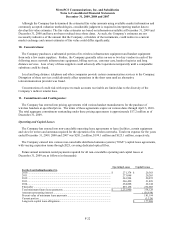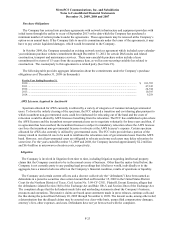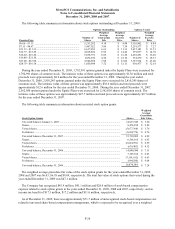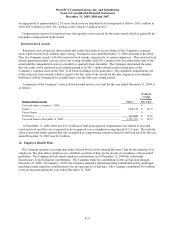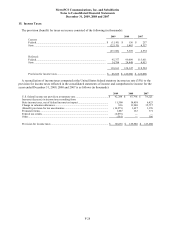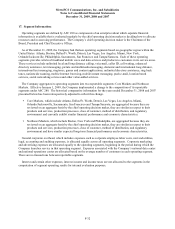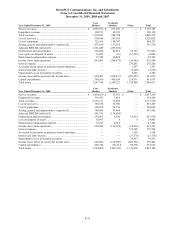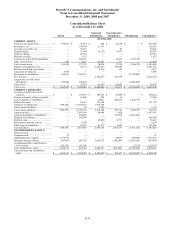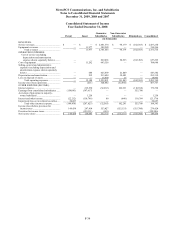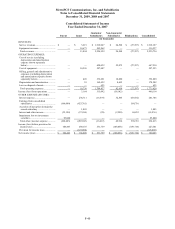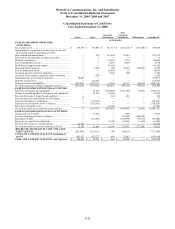Metro PCS 2009 Annual Report Download - page 146
Download and view the complete annual report
Please find page 146 of the 2009 Metro PCS annual report below. You can navigate through the pages in the report by either clicking on the pages listed below, or by using the keyword search tool below to find specific information within the annual report.MetroPCS Communications, Inc. and Subsidiaries
Notes to Consolidated Financial Statements
December 31, 2009, 2008 and 2007
F-32
17. Segment Information:
Operating segments are defined by ASC 280 as components of an enterprise about which separate financial
information is available that is evaluated regularly by the chief operating decision maker in deciding how to allocate
resources and in assessing performance. The Company’s chief operating decision maker is the Chairman of the
Board, President and Chief Executive Officer.
As of December 31, 2009, the Company had thirteen operating segments based on geographic region within the
United States: Atlanta, Boston, Dallas/Ft. Worth, Detroit, Las Vegas, Los Angeles, Miami, New York,
Orlando/Jacksonville, Philadelphia, Sacramento, San Francisco and Tampa/Sarasota. Each of these operating
segments provides wireless broadband mobile voice and data services and products to customers in its service areas.
These services include unlimited local and long distance calling, voicemail, caller ID, call waiting, enhanced
directory assistance, text messaging, picture and multimedia messaging, domestic and international long distance,
international text messaging, ringtones, games and content applications, unlimited directory assistance, ring back
tones, nationwide roaming, mobile Internet browsing, mobile instant messaging, push e-mail, location based
services, social networking services and other value-added services.
The Company aggregates its operating segments into two reportable segments: Core Markets and Northeast
Markets. Effective January 1, 2009, the Company implemented a change to the composition of its reportable
segments under ASC 280. The historical comparative information for the years ended December 31, 2008 and 2007
presented below has been retrospectively adjusted to reflect this change.
•Core Markets, which include Atlanta, Dallas/Ft. Worth, Detroit, Las Vegas, Los Angeles, Miami,
Orlando/Jacksonville, Sacramento, San Francisco and Tampa/Sarasota, are aggregated because they are
reviewed on an aggregate basis by the chief operating decision maker, they are similar in respect to their
products and services, production processes, class of customer, method of distribution, and regulatory
environment and currently exhibit similar financial performance and economic characteristics.
•Northeast Markets, which include Boston, New York and Philadelphia, are aggregated because they are
reviewed on an aggregate basis by the chief operating decision maker, they are similar in respect to their
products and services, production processes, class of customer, method of distribution, and regulatory
environment and have similar expected long-term financial performance and economic characteristics.
General corporate overhead, which includes expenses such as corporate employee labor costs, rent and utilities,
legal, accounting and auditing expenses, is allocated equally across all operating segments. Corporate marketing
and advertising expenses are allocated equally to the operating segments, beginning in the period during which the
Company launches service in that operating segment. Expenses associated with the Company’s national data center
and national operations center are allocated based on the average number of customers in each operating segment.
There are no transactions between reportable segments.
Interest and certain other expenses, interest income and income taxes are not allocated to the segments in the
computation of segment operating results for internal evaluation purposes.


